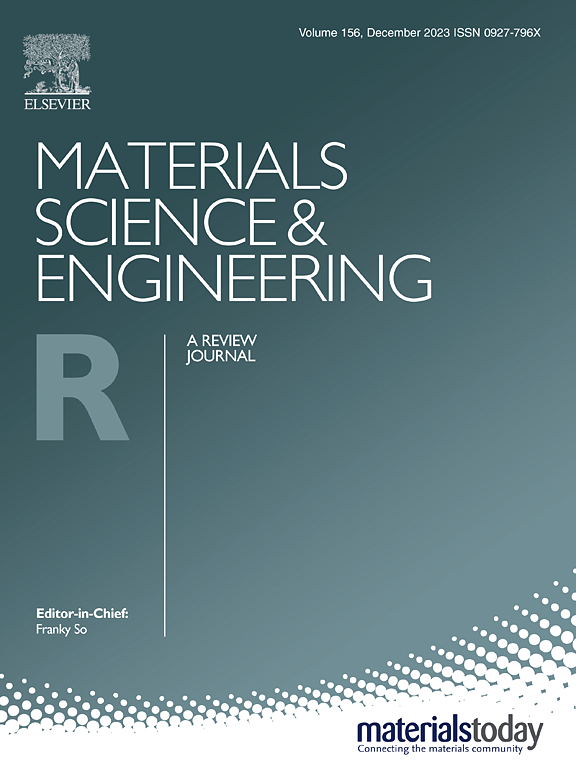Spin effects in electrocatalysis: Mechanisms, catalyst engineering, modulation, and applications
IF 31.6
1区 材料科学
Q1 MATERIALS SCIENCE, MULTIDISCIPLINARY
引用次数: 0
Abstract
Catalytic reactions are often governed by the fundamental parameter of spin, making the modulation of electron spin the key to overcoming the limitations of reaction efficiency. Despite advances, the relationship between spin effects and electrocatalytic properties remains not fully understood. This review explores the impact of electronic spin on key reaction intermediates and metal active sites in electrocatalytic reactions, with a particular focus on the role of spin effects in catalytic mechanisms. The electronic spin effects, including double-exchange, super-exchange, spin polarization, chirality-induced spin selectivity, and spin-orbit coupling effects, are first introduced to clarify their effects on intermediates, electron transfer and orbital interactions in electrocatalytic reactions. The fundamental characteristics and mechanisms of several typical electrocatalytic reactions are then summarized, with particular emphasis on the critical role of spin effects in adsorption and desorption behavior of reaction intermediates, followed by a more in-depth discussion of examples of spin catalysts in optimizing both reaction kinetics and thermodynamics. Moreover, spin engineering strategies, such as doping, strain, interface engineering, and external magnetic field-assisted approaches, that serve to modify the spin configuration of active sites and the adsorption strength of intermediates, thereby influencing spin-selective electron transfer during reactions, are reviewed in detail. Finally, this review examines the prospects of spin in various catalytic processes, emphasizing the importance of spin effects in enhancing catalytic efficiency, reaction kinetics, and thermodynamic performance. It also explores the challenges and opportunities that future research may encounter.
电催化中的自旋效应:机制、催化剂工程、调制和应用
催化反应往往受自旋这一基本参数的控制,使得电子自旋的调制成为克服反应效率限制的关键。尽管取得了进展,但自旋效应和电催化性能之间的关系仍未完全了解。本文综述了电催化反应中电子自旋对关键反应中间体和金属活性位点的影响,重点讨论了自旋效应在催化机理中的作用。首先介绍了电子自旋效应,包括双交换、超交换、自旋极化、手性诱导自旋选择性和自旋轨道耦合效应,阐明了它们对电催化反应中中间体、电子转移和轨道相互作用的影响。然后总结了几种典型电催化反应的基本特征和机理,特别强调了自旋效应在反应中间体吸附和解吸行为中的关键作用,然后更深入地讨论了自旋催化剂在优化反应动力学和热力学中的例子。此外,自旋工程策略,如掺杂、应变、界面工程和外磁场辅助方法,有助于改变活性位点的自旋构型和中间体的吸附强度,从而影响反应过程中的自旋选择性电子转移,都进行了详细的综述。最后,综述了自旋在各种催化过程中的应用前景,强调了自旋效应在提高催化效率、反应动力学和热力学性能方面的重要性。它还探讨了未来研究可能遇到的挑战和机遇。
本文章由计算机程序翻译,如有差异,请以英文原文为准。
求助全文
约1分钟内获得全文
求助全文
来源期刊

Materials Science and Engineering: R: Reports
工程技术-材料科学:综合
CiteScore
60.50
自引率
0.30%
发文量
19
审稿时长
34 days
期刊介绍:
Materials Science & Engineering R: Reports is a journal that covers a wide range of topics in the field of materials science and engineering. It publishes both experimental and theoretical research papers, providing background information and critical assessments on various topics. The journal aims to publish high-quality and novel research papers and reviews.
The subject areas covered by the journal include Materials Science (General), Electronic Materials, Optical Materials, and Magnetic Materials. In addition to regular issues, the journal also publishes special issues on key themes in the field of materials science, including Energy Materials, Materials for Health, Materials Discovery, Innovation for High Value Manufacturing, and Sustainable Materials development.
 求助内容:
求助内容: 应助结果提醒方式:
应助结果提醒方式:


